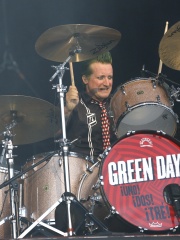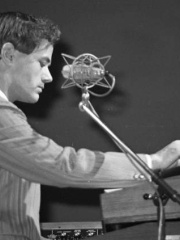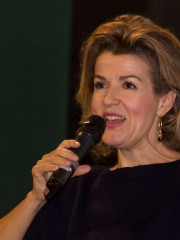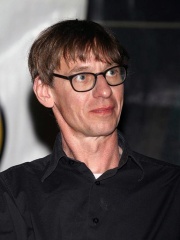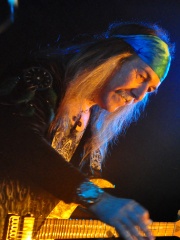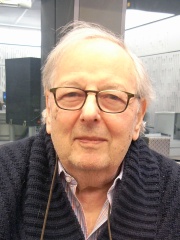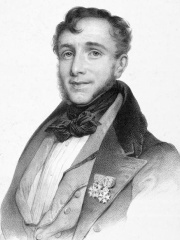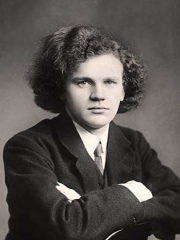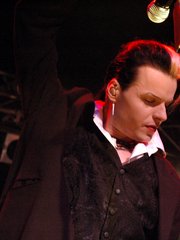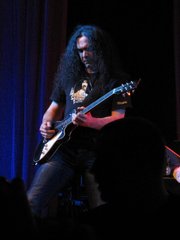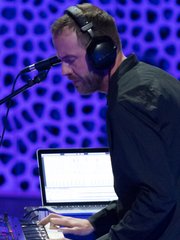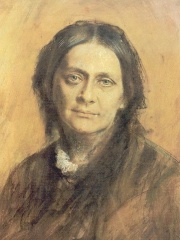
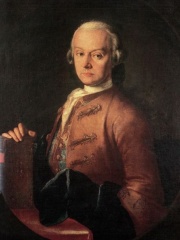
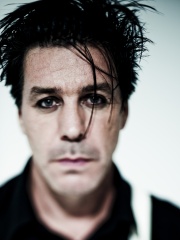
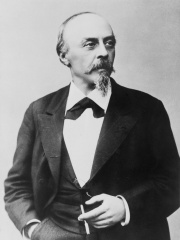

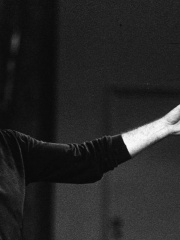
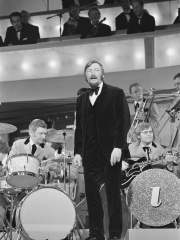
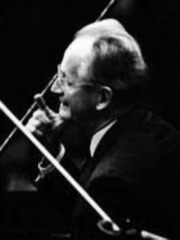
The Most Famous
MUSICIANS from Germany
This page contains a list of the greatest German Musicians. The pantheon dataset contains 3,175 Musicians, 141 of which were born in Germany. This makes Germany the birth place of the 3rd most number of Musicians behind United States, and United Kingdom.
Top 10
The following people are considered by Pantheon to be the top 10 most legendary German Musicians of all time. This list of famous German Musicians is sorted by HPI (Historical Popularity Index), a metric that aggregates information on a biography's online popularity. Visit the rankings page to view the entire list of German Musicians.

1. Clara Schumann (1819 - 1896)
With an HPI of 80.48, Clara Schumann is the most famous German Musician. Her biography has been translated into 73 different languages on wikipedia.
Clara Josephine Schumann (; German: [ˈklaːʁa ˈʃuːman]; née Wieck; 13 September 1819 – 20 May 1896) was a German pianist, composer, and piano teacher and prodigy. Regarded as one of the most distinguished pianists of the Romantic era, she exerted her influence over the course of a 61-year concert career, changing the format and repertoire of the piano recital by lessening the importance of purely virtuosic works. She also composed solo piano pieces, a piano concerto, chamber music, choral pieces, and songs She grew up in Leipzig, where both her father Friedrich Wieck and her mother Mariane were pianists and piano teachers. In addition, her mother was a singer. Clara was a child prodigy, and was trained by her father. She began touring at age eleven, and was successful in Paris and Vienna, among other cities. She married the composer Robert Schumann, on 12 September 1840, and the couple had eight children. Together, they encouraged Johannes Brahms and maintained a close relationship with him. She gave the public premieres of many works by her husband and by Brahms. After Robert Schumann's early death, she continued her concert tours in Europe for decades, frequently with the violinist Joseph Joachim and other chamber musicians. Beginning in 1878, she was an influential piano educator at Dr. Hoch's Konservatorium in Frankfurt, where she attracted international students. She edited the publication of her husband's work. Schumann died in Frankfurt, but was buried in Bonn beside her husband. Several films have focused on Schumann's life, the earliest being Träumerei (Dreaming) of 1944. A 2008 film, Geliebte Clara (Beloved Clara), was directed by Helma Sanders-Brahms. An image of Clara Schumann from an 1835 lithograph by Andreas Staub was featured on the 100 Deutsche Mark banknote from 1989 to 2002. Interest in her compositions began to revive in the late 20th century, and her 2019 bicentenary prompted new books and exhibitions.

2. Leopold Mozart (1719 - 1787)
With an HPI of 77.16, Leopold Mozart is the 2nd most famous German Musician. His biography has been translated into 63 different languages.
Johann Georg Leopold Mozart (14 November 1719 – 28 May 1787) was a German composer, violinist, and music theorist. He is best known today as the father and teacher of Wolfgang Amadeus Mozart, and for his violin textbook Versuch einer gründlichen Violinschule (1756).

3. Till Lindemann (b. 1963)
With an HPI of 71.29, Till Lindemann is the 3rd most famous German Musician. His biography has been translated into 52 different languages.
Till Lindemann (German pronunciation: [tɪl ˈlɪndəman]; born 4 January 1963) is a German singer-songwriter and poet, best known as the lead vocalist and lyricist of the Neue Deutsche Härte band Rammstein. Renowned for his theatrical stage performances, poetic lyrics, and distinctive bass-baritone voice, he is a central figure in the band’s international success. He was also part of the musical project Lindemann before beginning to release music under his own name. He has appeared in several films in minor roles and has published three books of poetry. Rammstein has sold over 25 million records worldwide, with five of their albums receiving platinum status, and Lindemann has been listed among the "50 Greatest Metal Frontmen of All Time" by Roadrunner Records.

4. Hans von Bülow (1830 - 1894)
With an HPI of 71.04, Hans von Bülow is the 4th most famous German Musician. His biography has been translated into 35 different languages.
Freiherr Hans Guido von Bülow (German: [ˌhans fɔn ˈbyːlo] ; 8 January 1830 – 12 February 1894) was a German conductor, pianist, and composer of the Romantic era. As one of the most distinguished conductors of the 19th century, his activity was critical for establishing the successes of several major composers of the time, especially Richard Wagner and Johannes Brahms. Alongside Carl Tausig, Bülow was perhaps the most prominent of the early students of the Hungarian composer, pianist and conductor Franz Liszt; he gave the first public performance of Liszt's Sonata in B minor in 1857. He became acquainted with, fell in love with and eventually married Liszt's daughter Cosima, who later left him for Wagner. Noted for his interpretation of the works of Ludwig van Beethoven, he was one of the earliest European musicians to tour the United States.
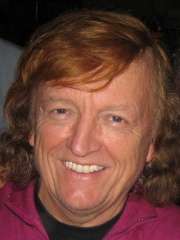
5. Frank Farian (1941 - 2024)
With an HPI of 70.40, Frank Farian is the 5th most famous German Musician. His biography has been translated into 33 different languages.
Franz Reuther (18 July 1941 – 23 January 2024), known professionally as Frank Farian, was a German record producer and singer who founded the 1970s disco-pop group Boney M., and the pop bands No Mercy and Milli Vanilli. He frequently created vocal groups in which the publicised members merely lip-synced to songs sung by session performers. Farian owned the record label MCI and several subsidiaries.

6. Rudolf Schenker (b. 1948)
With an HPI of 70.20, Rudolf Schenker is the 6th most famous German Musician. His biography has been translated into 32 different languages.
Rudolf Schenker (born 31 August 1948) is a German guitarist and songwriter, best known as the founder and leader of the hard rock band Scorpions. He is the rhythm and lead guitarist, primary songwriter and the sole constant member of the band. He is also the CEO/owner-manager of the Scorpions Musik-Produktions-und Verlagsgesellschaft mbH (Scorpions music production and publishing company) and owner/founder of the Scorpio-Sound-Studios in Lower Saxony. He is the older brother of Michael Schenker.Schenker was awarded the City of Hanover Plaque as well as the Cross of Merit First Class of the Lower Saxony Order of Merit in 2000.

7. Carlos Kleiber (1930 - 2004)
With an HPI of 69.96, Carlos Kleiber is the 7th most famous German Musician. His biography has been translated into 35 different languages.
Carlos Kleiber (3 July 1930 – 13 July 2004) was a German-born Austrian conductor, who is widely regarded as among the greatest conductors of all time. The son of the conductor Erich Kleiber, he was particularly known for the Romantic repertoire. John Rockwell notes writes: "A fabled perfectionist, he demanded long hours of rehearsal as his reputation grew and allowed him to obtain such concessions. But he made all that work pay off in performances that blended exactitude with impassioned spontaneity."

8. James Last (1929 - 2015)
With an HPI of 69.50, James Last is the 8th most famous German Musician. His biography has been translated into 38 different languages.
James Last (German pronunciation: [tʃeɪms last], [dʃeɪms lɑːst]; born Hans Last; 17 April 1929 – 9 June 2015) was a German composer and big band leader of the James Last Orchestra. Initially a jazz bassist, his trademark "happy music" made his numerous albums best-sellers in Germany and the United Kingdom, with 65 of his albums reaching the charts in the UK alone. His composition "Happy Heart" became an international success in interpretations by Andy Williams and Petula Clark. Last is reported to have sold an estimated 200 million records worldwide in his lifetime of which 80 million were sold by 1973 and won numerous awards including 200 gold and 14 platinum discs in Germany, the International MIDEM Prize at MIDEM in 1969, and West Germany's highest civilian award, the Bundesverdienstkreuz. His album This Is James Last remained a UK best-seller for 48 weeks, and his song "Games That Lovers Play" has been covered over a hundred times. Last undertook his final tour months before his death at age 86, upon discovering in September 2014 that an illness had worsened. His final UK performance was his 90th at London's Royal Albert Hall, more than any other performer except Eric Clapton. Last's trademark sound employed big band arrangements of well-known tunes with a jaunty dance beat, often heavy on bass and brass. Despite at times being derided by critics and purists as the "king of elevator music" or "acoustic porridge", his style and music were popular in numerous countries and cultures, including Japan, South Korea, the former Soviet Union, the US and UK, and his native Germany, where it became "the archetypal soundtrack of any German cellar bar party", and made him the "most commercially successful bandleader" of the second half of the 20th century.

9. Wilhelm Kempff (1895 - 1991)
With an HPI of 68.78, Wilhelm Kempff is the 9th most famous German Musician. His biography has been translated into 34 different languages.
Wilhelm Walter Friedrich Kempff (25 November 1895 – 23 May 1991) was a German pianist, teacher and composer. Although his repertoire included Bach, Mozart, Chopin, Schumann, Liszt and Brahms, Kempff was particularly well known for his interpretations of the music of Ludwig van Beethoven and Franz Schubert, recording the complete sonatas of both composers. He is considered to have been one of the chief exponents of the Germanic tradition during the 20th century and one of the greatest pianists of all time.

10. Klaus Nomi (1944 - 1983)
With an HPI of 67.93, Klaus Nomi is the 10th most famous German Musician. His biography has been translated into 25 different languages.
Klaus Sperber (January 24, 1944 – August 6, 1983), known professionally as Klaus Nomi, was a German countertenor and baritone noted for his wide vocal range and an unusual, otherworldly stage persona. In the 1970s, Nomi immersed himself in the East Village art scene. He was known for his bizarre and visionary theatrical live performances, heavy make-up, unusual costumes, and a highly stylized signature hairdo that flaunted a receding hairline. His songs were equally unusual, ranging from synthesizer-laden interpretations of classical opera to post-punk covers of 1960s pop standards like Chubby Checker's "The Twist" and Lou Christie's "Lightnin' Strikes". Nomi was one of David Bowie's backing singers for a 1979 performance on Saturday Night Live.
People
Pantheon has 141 people classified as German musicians born between 1682 and 1994. Of these 141, 91 (64.54%) of them are still alive today. The most famous living German musicians include Till Lindemann, Rudolf Schenker, and Michael Schenker. The most famous deceased German musicians include Clara Schumann, Leopold Mozart, and Hans von Bülow. As of April 2024, 10 new German musicians have been added to Pantheon including Tom Angelripper, Tilo Wolff, and Albrecht Mayer.
Living German Musicians
Go to all RankingsTill Lindemann
1963 - Present
HPI: 71.29
Rudolf Schenker
1948 - Present
HPI: 70.20
Michael Schenker
1955 - Present
HPI: 65.32
Richard Z. Kruspe
1967 - Present
HPI: 65.20
Tré Cool
1972 - Present
HPI: 65.18
Matthias Jabs
1955 - Present
HPI: 64.88
Ralf Hütter
1946 - Present
HPI: 64.14
Paul Landers
1964 - Present
HPI: 63.66
Anne-Sophie Mutter
1963 - Present
HPI: 63.44
Kai Hansen
1963 - Present
HPI: 63.05
Christian Lorenz
1966 - Present
HPI: 62.96
Uli Jon Roth
1954 - Present
HPI: 62.70
Deceased German Musicians
Go to all RankingsClara Schumann
1819 - 1896
HPI: 80.48
Leopold Mozart
1719 - 1787
HPI: 77.16
Hans von Bülow
1830 - 1894
HPI: 71.04
Frank Farian
1941 - 2024
HPI: 70.40
Carlos Kleiber
1930 - 2004
HPI: 69.96
James Last
1929 - 2015
HPI: 69.50
Wilhelm Kempff
1895 - 1991
HPI: 68.78
Klaus Nomi
1944 - 1983
HPI: 67.93
André Previn
1929 - 2019
HPI: 65.72
Friedrich Kalkbrenner
1784 - 1849
HPI: 65.69
Florian Schneider
1947 - 2020
HPI: 65.45
Wilhelm Backhaus
1884 - 1969
HPI: 65.08
Newly Added German Musicians (2025)
Go to all RankingsTom Angelripper
1963 - Present
HPI: 51.49
Tilo Wolff
1972 - Present
HPI: 50.18
Albrecht Mayer
1965 - Present
HPI: 49.03
Marusha
1966 - Present
HPI: 48.07
Sascha Paeth
1970 - Present
HPI: 47.39
Katharina Wagner
1978 - Present
HPI: 46.91
Pete Namlook
1960 - 2012
HPI: 46.14
André Olbrich
1967 - Present
HPI: 43.08
Ulrich Schnauss
1977 - Present
HPI: 38.43
Boys Noize
1982 - Present
HPI: 37.21
Overlapping Lives
Which Musicians were alive at the same time? This visualization shows the lifespans of the 25 most globally memorable Musicians since 1700.



